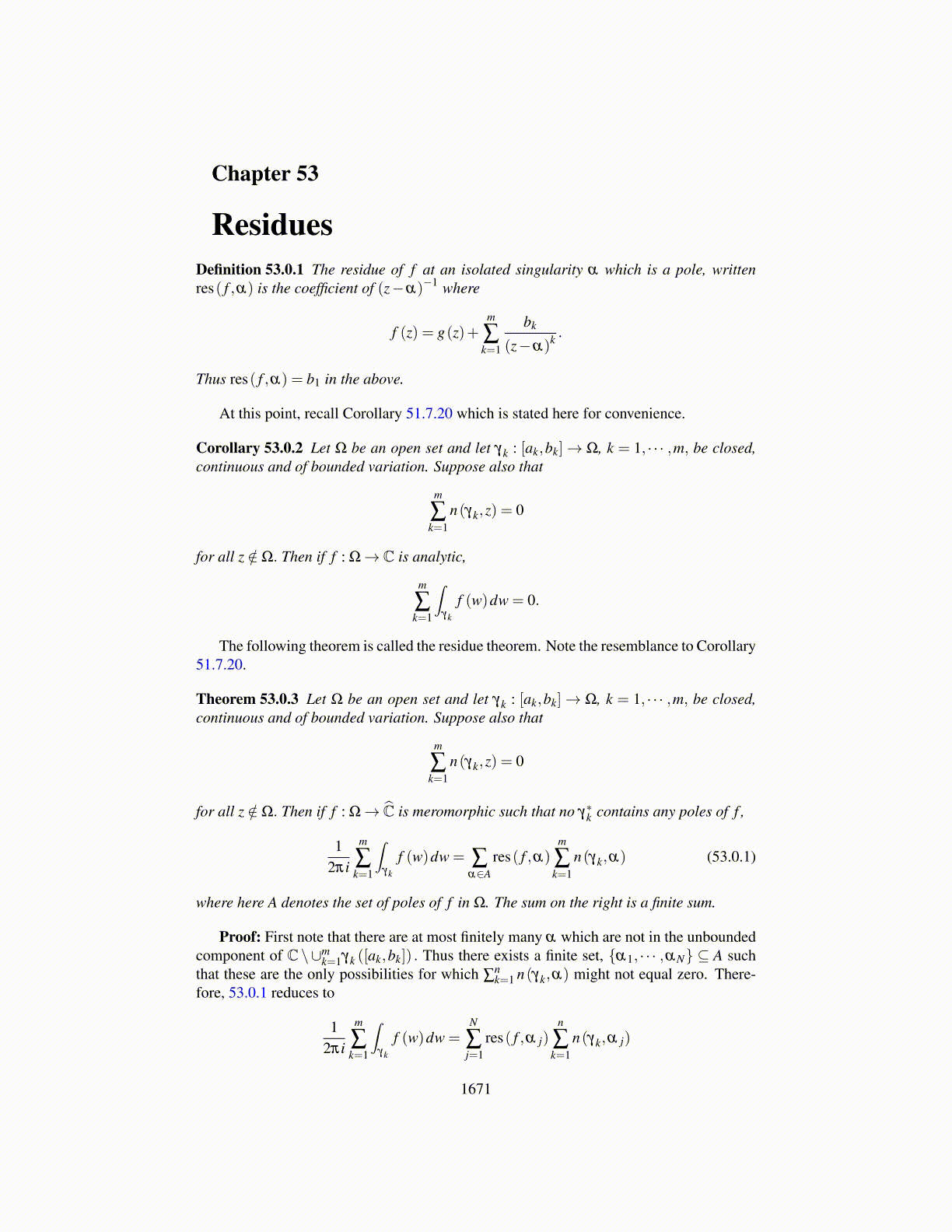
52.8. EXERCISES 1671
D and the only eigenvalues of A(s) which could be in K0 are in D. (This last assertionfollows from noting that λ (t0) is the only eigenvalue of A(t0) in K0 and so the others areat a positive distance from K0. For s close enough to t0, the eigenvalues of A(s) are eitherclose to these eigenvalues of A(t0) at a positive distance from K0 or they are close to theeigenvalue, λ (t0) in which case it can be assumed they are in D.) But this shows that t0 isnot really an upper bound to S. Therefore, t0 = 1 and the lemma is proved.
With this lemma, the conclusion of the above corollary can be improved.
Corollary 52.7.7 Suppose one of the Gerschgorin discs, Di is disjoint from the union ofthe others. Then Di contains exactly one eigenvalue of A and this eigenvalue is a simpleroot to the characteristic polynomial of A.
Proof: In the proof of Corollary 52.7.5, first note that aii is a simple root of A(0) sinceotherwise the ith Gerschgorin disc would not be disjoint from the others. Also, K, theconnected component determined by aii must be contained in Di because it is connectedand by Gerschgorin’s theorem above, K ∩σ (A(t)) must be contained in the union of theGerschgorin discs. Since all the other eigenvalues of A(0) , the a j j, are outside Di, itfollows that K ∩σ (A(0)) = aii. Therefore, by Lemma 52.7.6, K ∩σ (A(1)) = K ∩σ (A)consists of a single simple eigenvalue. This proves the corollary.
Example 52.7.8 Consider the matrix, 5 1 01 1 10 1 0
The Gerschgorin discs are D(5,1) ,D(1,2) , and D(0,1) . Then D(5,1) is disjoint from
the other discs. Therefore, there should be an eigenvalue in D(5,1) . The actual eigenvaluesare not easy to find. They are the roots of the characteristic equation, t3−6t2 +3t +5 = 0.The numerical values of these are −.66966,1.4231, and 5.24655, verifying the predic-tions of Gerschgorin’s theorem.
52.8 Exercises1. Use Theorem 52.6.1 to give an alternate proof of the fundamental theorem of algebra.
Hint: Take a contour of the form γr = reit where t ∈ [0,2π] . Consider∫
γr
p′(z)p(z) dz and
consider the limit as r→ ∞.
2. Let M be an n× n matrix. Recall that the eigenvalues of M are given by the zerosof the polynomial, pM (z) = det(M− zI) where I is the n× n identity. Formulate atheorem which describes how the eigenvalues depend on small changes in M. Hint:You could define a norm on the space of n×n matrices as ||M|| ≡ tr (MM∗)1/2 whereM∗ is the conjugate transpose of M. Thus
||M||=
(∑j,k
∣∣M jk∣∣2)1/2
.